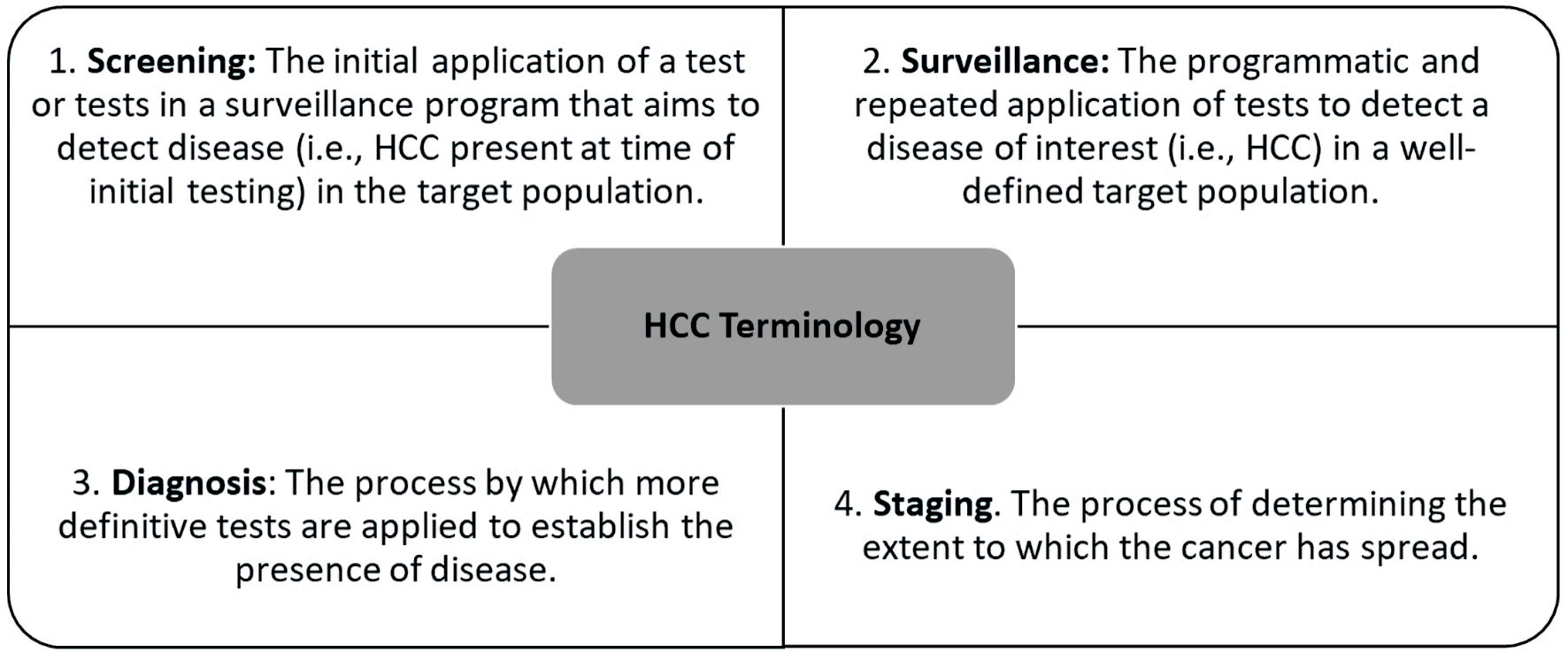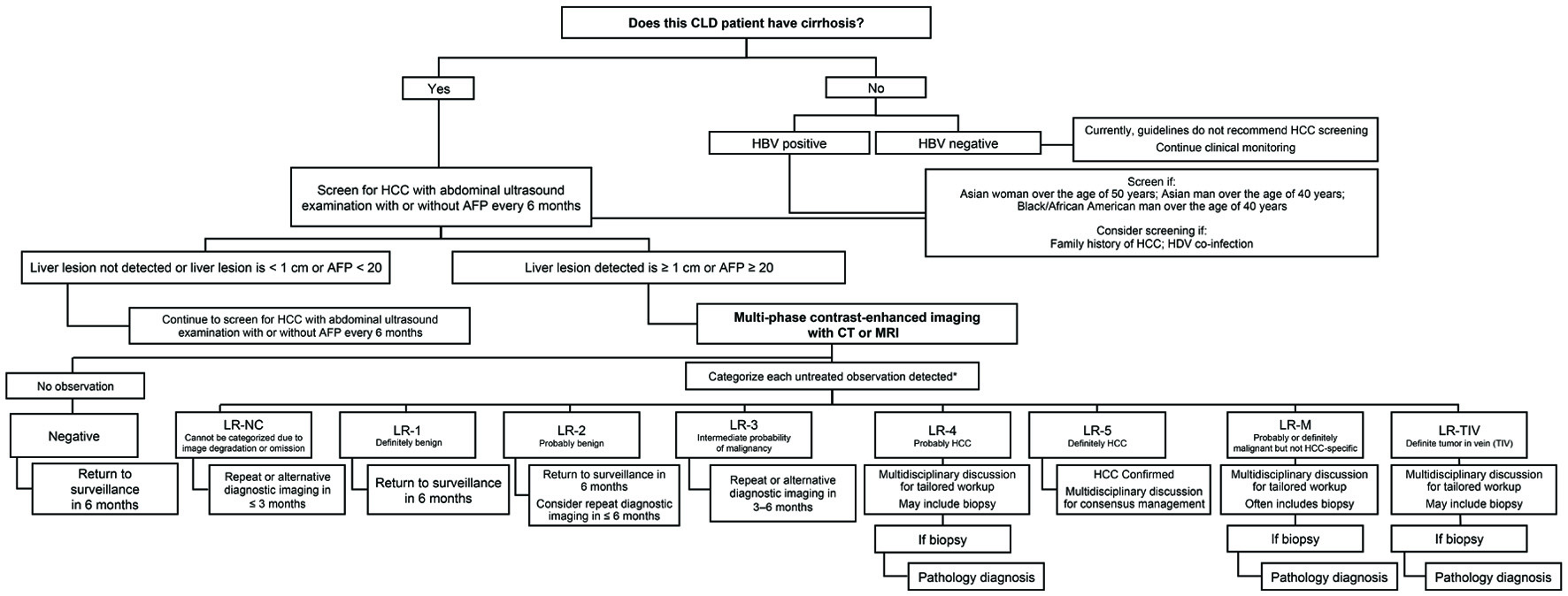
Figure 1. HCC terminology [14]. HCC: hepatocellular carcinoma.
| Gastroenterology Research, ISSN 1918-2805 print, 1918-2813 online, Open Access |
| Article copyright, the authors; Journal compilation copyright, Gastroenterol Res and Elmer Press Inc |
| Journal website https://www.gastrores.org |
Review
Volume 15, Number 6, December 2022, pages 297-307
An Open-Access, Interactive Decision-Support Tool to Facilitate Guideline-Driven Care for Hepatocellular Carcinoma
Figures



Tables
| Study | Aim | Methods | Results |
|---|---|---|---|
| AFP: alpha-fetoprotein; BCLC: Barcelona Clinic Liver Cancer; CI: confidence interval; HBV: hepatitis B virus; HCC: hepatocellular carcinoma; HR: hazard ratio; OS: overall survival; SEER: Surveillance, Epidemiology, and End Results; VA: Veterans’ Affairs. | |||
| Zhang et al, 2004 [25] | To assess the effect of screening on HCC mortality in people at increased risk | 18,816 patients were randomly allocated to a screening (9,373) or control (9,443) group. | HCC mortality rate was significantly lower in the screened group than in controls (83.2/100,000 and 131.5/100,000, respectively, mortality rate ratio of 0.63 (95% CI, 0.41 - 0.98)). Biannual screening reduced HCC mortality by 37%. |
| Singal et al, 2014 [23] | To determine the effect of HCC surveillance on early-stage tumor detection, receipt of curative therapy, and overall survival in patients with cirrhosis | A systematic literature review from 1990 to 2014 and a search of national meeting abstracts from 2009 to 2012 identified 15,158 patients. | In patients with cirrhosis, HCC surveillance was significantly associated with: 1) improved early-stage detection (odds ratio (OR) 2.08, 95% CI, 1.80 - 2.37); 2) curative treatment rates (OR 2.24, 95% CI, 1.99 - 2.52); 3) prolonged survival (OR 1.90, 95% CI, 1.67 - 2.17). |
| van Meer et al, 2015 [24] | To explore the effects of HCC surveillance in “real-life” clinical practice | 1,074 patients with HCC were diagnosed in the period 2005 - 2012. | Compared to patients not receiving regular HCC surveillance, those receiving HCC surveillance were patients who: 1) had earlier HCC tumor stage at diagnosis (BCLC 0/A: 61% vs. 21%); 2) were more likely to receive potentially curative therapy resection/transplantation (34% vs. 25%); 3) had significantly lower risk of overall mortality (HR 0.50, 95% CI, 0.37 - 0.69). |
| Mittal et al, 2016 [22] | To evaluate the effectiveness of HCC surveillance in the national VA clinical practice | Medical records of 887 HCC patients between 2005 - 2010 were reviewed. | Patients who received surveillance (vs. those without) were significantly more likely to: 1) have early-stage disease HCC (BCLC stage 0/A 27.2% vs. 11.6%); 2) receive potentially curative (20.9% vs. 11.6%) or palliative (59.2% vs. 45.5%) treatments. Receipt of HCC surveillance was associated with 38% reduction in mortality risk (unadjusted HR 0.62, 95% CI, 0.54 - 0.71). Among patients with HCC, pre-diagnosis HCC surveillance was associated with a significant 38% reduction in overall mortality. |
| Wu et al, 2016 [26] | To analyze the effectiveness of screening in reducing mortality | 52,823 newly diagnosed HCC patients from 2002 to 2007, were classified when they received ultrasonography screening. | On multivariable subgroup analyses, the associations between shorter screening intervals and better survival were observed in nearly all subgroups, especially in younger patients, patients without diabetes and patients with HBV infection. |
| Singal et al, 2017 [27] | To characterize the association between HCC screening and early tumor detection, curative treatment, and overall survival among patients with cirrhosis | This “real-world” study was a retrospective cohort study of 377 HCC patients diagnosed between June 2012 and May 2013. | Screen-detected patients had a significantly higher proportion of early tumors (BCLC stage A 63.1% vs. 36.4%, P < 0.001) and were more likely to undergo curative treatment (31% vs. 13%, P = 0.02). HCC screening was significantly associated with improved survival in multivariate analysis (HR 0.41; 95% CI, 0.26 - 0.65) after adjusting for patient demographics, Child-Pugh class, and performance status. Median survival of screen-detected patients was 14.6 months, compared with 6.0 months for non-screen-detected patients, with the difference remaining significant after adjusting for lead-time bias (HR 0.59, 95% CI, 0.37 - 0.93). |
| Choi et al, 2019 [20] | To examine the association between screening receipt and early detection of tumors using multivariable logistic regression | 13,714 patients diagnosed with HCC from 2003 through 2013 included in the SEER Program-Medicare database were analyzed. | After correction for lead- and length-time biases, higher proportions of patients with consistent (23%; 95% CI, 21-25%) and inconsistent screening (19%; 95% CI, 19-20%) survived for 3 years compared with patients without screening (13%; 95% CI, 12-14%). |
| Study | Methods | Results |
|---|---|---|
| CI: confidence interval; HCC: hepatocellular carcinoma; HCV: hepatitis C virus; SEER: Surveillance, Epidemiology, and End Results. | ||
| Yu et al, 2006 [33] | Patient age, tumor stage, rates of surgical intervention and survival were analyzed in Black (n = 1718) and White (n = 9,752) HCC cases between 1992 and 2001. | Black patients with HCC were: 1) significantly younger at diagnosis (P < 0.0001); 2) more likely to have regional and distant metastasis at presentation (P < 0.0005); 3) less likely to have surgery performed (P < 0.001). Overall survival rates were lower in Blacks (P = 0.0033). |
| Altekruse et al, 2014 [35] | HCC incidence data from SEER 18 registries and liver cancer mortality data from the National Center for Health Statistics were analyzed | HCC incidence and HCC mortality increased among Blacks, Hispanics, and Whites aged 50 years and over. During 2006 - 2010, among individuals 50 - 64 years of age, Blacks and Hispanics had higher incidence and mortality rates than Asians/Pacific Islanders. |
| Ha et al, 2016 [36] | Population-based cohort study using SEER cancer registry data from 2003 to 2011 to investigate race-specific disparities in HCC incidence and survival | Asians had the highest HCC incidence, followed by Blacks, Hispanics, and non-Hispanic Whites. Hispanics had the greatest increase in HCC incidence (+35.8%), whereas Asians experienced a 5.5% decrease. The overall 5-year HCC survival rate was highest among Asians (26.1%; 95% CI, 24.5-27.6%) and lowest among Blacks (21.3%; 95% CI, 19.5-23.1%). |
| Shaltiel et al, 2021 [34] | Single-center retrospective cohort study of patients with HCV and HCC from 2003 to 2018 | Compared to non-Black patients, Black patients had: 1) less early-stage HCC (20.2% vs. 32.3%; P < 0.05); 2) larger tumors (median (interquartile range): 3.5 cm (2.2 - 6.2 cm) vs. 3.1 cm (2.1 - 5.1 cm); P < 0.01); 3) more poorly differentiated tumors (30.3% vs. 20.5%; P < 0.05); 4) more microvascular invasion (67.2% vs. 56.5%; P < 0.05). |
| Performance scale (PS) | Description |
|---|---|
| ECOG: Eastern Cooperative Oncology Group. | |
| 0 | Fully active, able to carry on all pre-disease performance without restriction |
| 1 | Restricted in physically strenuous activity but ambulatory and able to carry out work of a light or sedentary nature, e.g., light housework, office work |
| 2 | Ambulatory and capable of all selfcare but unable to carry out any work activities; up and about more than 50% of waking hours |
| 3 | Capable of only limited selfcare; confined to bed or chair more than 50% of waking hours |
| 4 | Completely disabled; cannot carry on any selfcare; totally confined to bed or chair |
| 5 | Dead |
| Milan Criteria [58] | UNOS Downstaging Criteria [55] | AFP criteria [61] |
|---|---|---|
| HCC: hepatocellular carcinoma; BCLC: Barcelona Clinic Liver Cancer; CI: confidence interval; AFP: alpha-fetoprotein; DS: down-staging; LRT: locoregional therapy; LT: liver transplantation; TTD: total tumor diameter; UNOS: United Network of Organ Sharing. | ||
| Single HCC lesion < 5 cm or up to three HCC lesions all < 3 cm with no extrahepatic spread of HCC. | A single HCC lesion 5.1 - 8.0 cm. | If initial AFP level was > 1,000 ng/mL, it must drop to less than 500 ng/mL following DS by LRT to qualify for waitlisting for LT with UNOS Exception Criteria. |
| Two to three HCC lesions ≤ 5 cm. | ||
| Four to five HCC lesions ≤ 3 cm. | ||
| TTD must be ≤ 8 cm with no extrahepatic spread of HCC. | ||
| HCC must be down-staged to Milan criteria by LRT for automatic waitlisting for LT with an HCC exception by UNOS. | ||